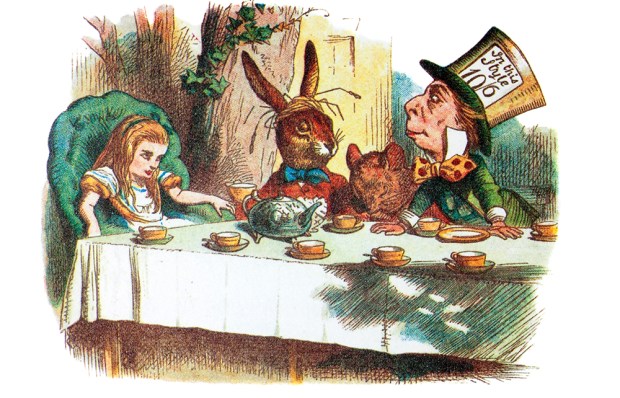When I ran out of space last week, I was about to mention the way in which some people relish long names. It may be childish but they enjoy it. In Dorothy L. Sayers’s detective world, characters unashamedly cap obscure quotations and references. There is an exchange in Murder Must Advertise between an ad man and Lord Peter Wimsey:
‘Anyway how do you spell Chrononhotonthologos?’
‘Oh! I can do that. And Aldiborontophoscophornio too.’
The funny thing there is that, in the edition I picked up, published by Hodder in 1983, the latter name is spelled wrongly. It should be Aldiborontiphoscophornio. He was a character in Henry Carey’s quite funny play of 1734, Chrononhotonthologos, the first two lines of which are ‘Aldiborontiphoscophornio!/ Where left you Chrononhotonthologos?’
Carey, when he wanted, could turn out lyrics in a plain style. Nothing could be simpler than his song ‘Sally in Our Alley’: ‘Of all the Girls that are so smart/ There’s none like pretty Sally,/ She is the Darling of my Heart,/ And she lives in our Alley.’
No doubt when beginning Chrononhotonthologos, Carey was aware of the line in The Life and Death of Tom Thumb the Great by Henry Fielding , staged three years earlier: ‘Oh! Huncamunca, Huncamunca, oh!’ That parodied a line in James (‘The Seasons’) Thomson’s Sophonisba: ‘O Sophonisba! Sophonisba O!’ Thomson had intended a serious tragedy, but this line lent itself to parody.
The deliberate comic Chrononhotonthologos has lasted longer, though when Robert Southey wrote a letter in 1804 mentioning Chrononhotonthologos, it was only 70 years after the play’s production — equivalent to 1946 for us now. In the same period Walter Scott nicknamed the optimistic publisher John Ballantyne ‘Rigdumfunnidos’ (another character from Chrononhotonthologos) and called his apparently more pompous brother James ‘Aldiborontiphoscophornio’. Their contemporary Charles Lamb, who prided himself on knowing old plays, thought Rigdumfunnidos familiar enough to use the name unexplained in his popular Essays of Elia. That would be unwise now, though anyone who recognised it might feel complimented.
The post Chrononhotonthologos appeared first on The Spectator.
Got something to add? Join the discussion and comment below.
Get 10 issues for just $10
Subscribe to The Spectator Australia today for the next 10 magazine issues, plus full online access, for just $10.
You might disagree with half of it, but you’ll enjoy reading all of it. Try your first month for free, then just $2 a week for the remainder of your first year.














Comments
Don't miss out
Join the conversation with other Spectator Australia readers. Subscribe to leave a comment.
SUBSCRIBEAlready a subscriber? Log in